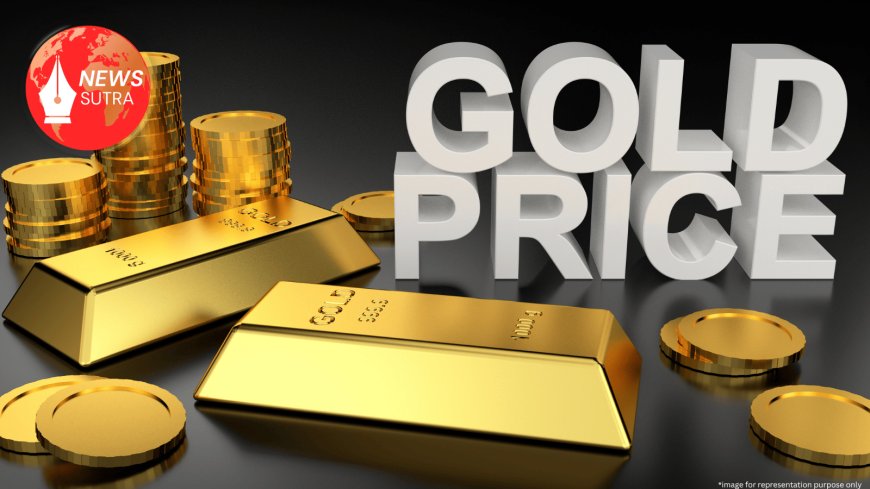Gold Prices Set to Soar: Analysts Predict ₹1 Lakh per 10g in H2 2025 Amid Global and Domestic Uncertainty
India’s gold prices may reach ₹1,00,000 per 10g in H2 2025 as global instability and local demand drive record highs. Analysts offer insights and projections.

By Ronald Kapper
Published: July 6, 2025
Mumbai – Gold, often seen as the safest hedge against inflation and economic volatility, is on the brink of breaching the psychological ₹1,00,000 mark per 10 grams in India, according to leading market analysts. The yellow metal has already witnessed a steady upward trajectory in 2025, and experts forecast even sharper gains in the second half of the year (H2 2025), fueled by global tensions, central bank buying, and local demand patterns.
On Friday, 24-carat gold was trading at around ₹74,200 per 10g in major cities like Mumbai and Delhi, up more than 20% year-to-date. Analysts suggest that if current trends persist, domestic gold prices could reach ₹95,000 to ₹100,000 per 10g before the end of 2025.
Why Are Gold Prices Rising So Sharply?
Multiple global and local factors are converging to push gold prices to historic highs:
1. Geopolitical Tensions and Safe-Haven Buying
Ongoing conflicts in Eastern Europe and heightened tensions in the South China Sea are prompting central banks and investors worldwide to increase their holdings of gold. According to the World Gold Council, global central banks added over 1,200 tonnes of gold to their reserves in 2024 alone—a record number, reflecting a shift away from the US dollar as a reserve currency.
2. Weakening Rupee and Import Costs
India imports nearly all of its gold demand. The rupee's depreciation against the US dollar is directly impacting landed gold prices, making the metal more expensive for Indian buyers. The RBI’s attempts to manage currency volatility have done little to stem the impact on bullion.
3. Inflation and Recession Fears
Despite recent rate hikes, inflation in India remains above the Reserve Bank’s comfort level. Globally, signs of a slowdown in the US and Europe have renewed fears of recession. Gold remains the preferred investment in such scenarios, leading to increasing inflows into gold ETFs and physical bullion markets.
4. Robust Domestic Demand
India’s cultural affinity with gold remains strong. The upcoming festive and wedding seasons in H2 2025 are expected to drive a surge in demand. According to India Bullion & Jewellers Association (IBJA), local jewellers are already seeing early booking trends indicating strong interest at current prices—despite the high cost.
Expert Projections: Could ₹1 Lakh Be a Reality?
Top commodities analysts are aligning their predictions, suggesting ₹1 lakh per 10g is no longer a speculative ceiling—it may soon be a market reality.
Ajay Kedia, Director at Kedia Advisory, said:
“Global headwinds are strong, and local demand is firm. If inflation persists and geopolitical tensions worsen, ₹1 lakh gold is inevitable in H2 2025. Even conservative models show a base-case scenario of ₹95,000 per 10g.”
Similarly, Motilal Oswal Financial Services published a mid-year report forecasting gold to hover between $2,500–$2,650 per ounce internationally by December, which would translate to ₹100,000 per 10g domestically if the rupee weakens further.
What It Means for Investors
For investors, the message is clear: gold is regaining its shine. Over the last two years, gold has outperformed equity indices like the Nifty and Sensex, offering better returns with lower volatility.
Experts suggest a diversified portfolio with at least 10–15% allocation to gold, particularly through Sovereign Gold Bonds (SGBs) or Gold ETFs. These instruments offer returns aligned with market prices, along with additional tax and liquidity benefits.
“For long-term investors, gold remains a must-have, especially when global markets are shaky. It’s not just about price—it’s about preserving wealth,” said Navneet Damani, Senior VP at Motilal Oswal.
Jewellery Industry Reacts: Mixed Sentiment
While investors are enthusiastic, the jewellery trade is seeing a mixed sentiment. High prices are deterring some retail buyers, especially in rural areas. However, urban jewellers report continued interest in lighter, minimalistic designs.
“The high price tag changes buying behavior, but it doesn’t kill demand,” said Nitin Khandelwal, a senior member of the All India Gems and Jewellery Domestic Council (GJC). “Consumers are buying smarter, opting for lightweight jewellery, gold coins, and bullion instead of heavy ornaments.”
Government Outlook and Policy Measures
While there are no immediate plans to alter gold import duties, the government is closely monitoring rising imports and their impact on the current account deficit. In the 2024-25 Union Budget, the Finance Ministry increased customs scrutiny on gold smuggling and introduced digital hallmarking systems to boost transparency in trade.
Analysts warn that if imports surge too sharply, the government may resort to tightening import norms—something that could further influence domestic pricing.
Conclusion
India's gold market is at a pivotal moment. With international markets rattled and domestic inflation refusing to cool down, all signs point to continued momentum in gold prices. Whether or not ₹1,00,000 per 10g is breached in 2025, the trend underscores the metal’s enduring relevance in India’s financial ecosystem.
For investors, jewellers, and policy makers alike, the golden era may just be beginning—only this time, it's coming with a six-figure price tag.














